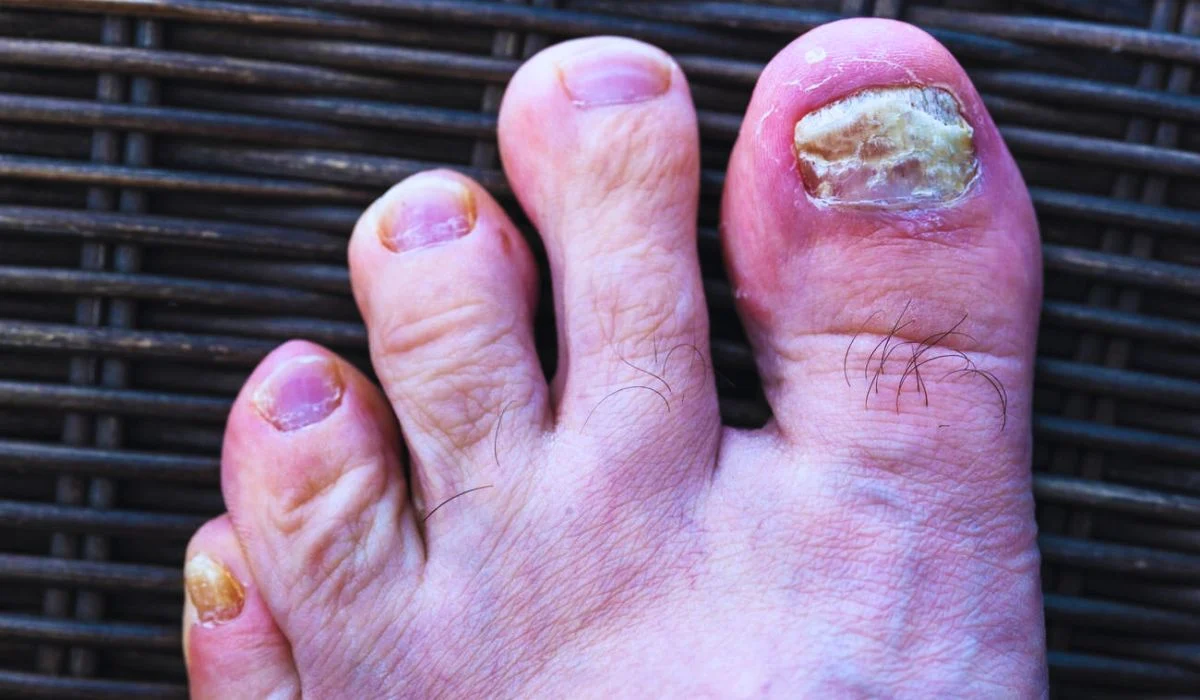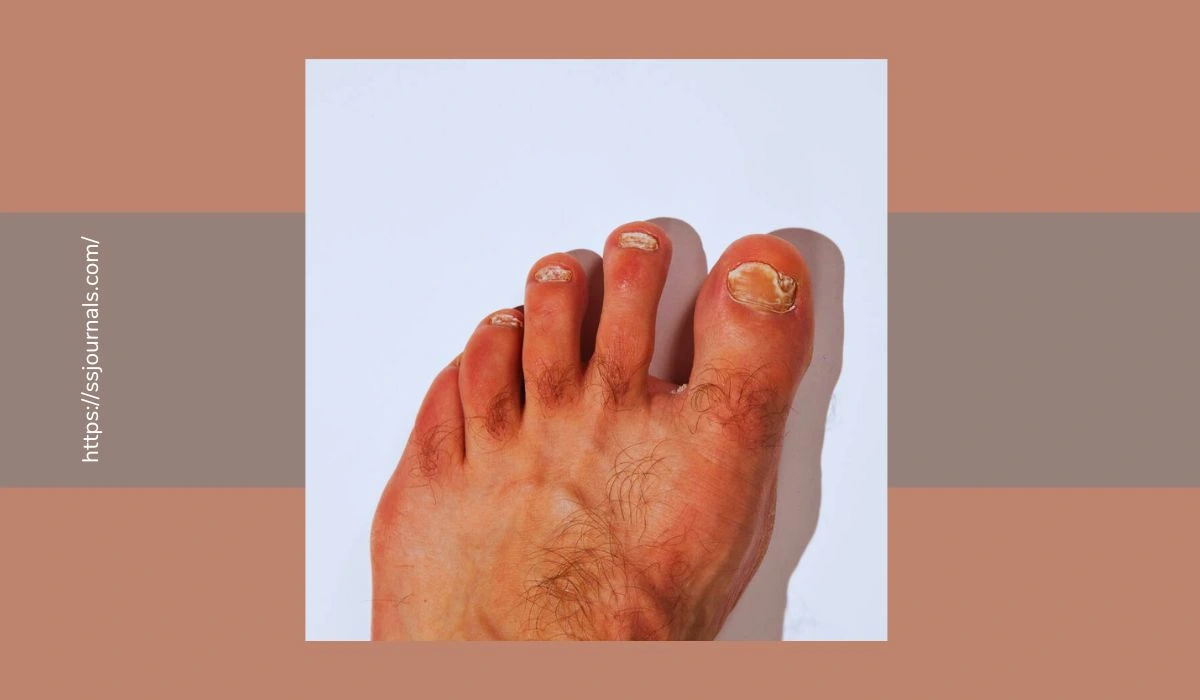Toenail fungus, also known as onychomycosis, is a common condition that affects millions of people worldwide. It occurs when fungi, such as dermatophytes, Candida, or nondermatophytic molds, infect the toenails and feed on the keratin found in nails. Toenail fungus thrives in warm, moist environments like showers, locker rooms, and pools.
If left untreated, it can cause the toenail to become discolored, thickened, crumbly, and distorted. While toenail fungus is usually painless, it can lead to pain when wearing shoes and can be unsightly.
Fortunately, there are several effective treatments available, both over-the-counter and prescription. This article will discuss the different types of toenail fungus and provide information on prevention and home remedies.
Understanding Toenail Fungus

Fungi are microscopic organisms that can live on the skin, hair, and nails. There are several types of fungi that cause toenail infections:
- Dermatophytes – the most common cause of toenail fungus. Dermatophytes feed on keratin. The types that infect toenails include Trichophyton rubrum, Trichophyton mentagrophytes, and Epidermophyton floccosum.
- Candida – a yeast that can cause fungal infections. Candida albicans is the most common species that infect nails.
- Nondermatophytic molds – fungi found in soil and on plants. Some types like Scytalidium, Aspergillus, and Fusarium can infect toenails.
When the fungi invade the nail, they produce enzymes that damage the nail bed and plate. As the infection worsens, the nail can become stained yellow, brown, black, or green. Debris often builds up under the nail, causing it to detach and thicken. The infection can spread to other toenails if left untreated.
Also Check: Are Toenail Fungus Contagious? What You Need To Know
What Are The Different Types Of Toenail Fungus?
There are several classifications of toenail fungus based on the part of the nail affected:
🔹 Distal Subungual Onychomycosis
This is the most common type, accounting for about 70% of toenail fungal infections. It starts at the tip of the toenail and slowly spreads toward the cuticle. The toenail becomes yellowed, opaque, and thickened.
🔹 Proximal Subungual Onychomycosis
In this type, the infection starts at the cuticle and spreads toward the nail tip. The cuticle detaches from the nail plate and can appear white and powdery.
🔹 White Superficial Onychomycosis
This causes white spots and powdery-looking debris on the top layer of the toenail plate. The nails become brittle and can crumble.
🔹 Candidal Onychomycosis
This infection is caused by Candida yeast. The nail plate can become soft, bubbly, and crumbly.
🔹 Total Dystrophic Onychomycosis
This is the most severe type of infection where the entire toenail is thickened, distorted, and discolored. The nail can detach completely from the nail bed.
How Can Toenail Fungus Be Prevented?
There are several tips to help prevent toenail fungus:
- Keep feet clean and dry. Wash feet daily, dry thoroughly, and wear moisture-wicking socks.
- Wear shower shoes in public areas like pools, showers, and locker rooms.
- Disinfect pedicure tools and nail salon equipment. Bring your own when getting a pedicure.
- Avoid sharing towels, socks, or shoes with others.
- Treat the athlete’s foot immediately. It can spread to the toenails.
- Throw out old shoes and replace frequently used shoes every 6-12 months.
- Apply antifungal powder inside the shoes.
- Clip toenails straight across and avoid injuring the skin around the nails.
- Wear clean, dry socks and rotate pairs of shoes.
Home Remedies For Toenail Fungus
Some home remedies may help treat mild cases of toenail fungus or be used alongside medical treatments:
- Tea tree oil – Has antifungal properties when applied directly to nails.
- Apple cider vinegar – creates an acidic environment to inhibit fungal growth.
- Baking soda – This can help remove debris and soften thickened nails.
- Hydrogen peroxide – Helps kill fungus when applied under the nail.
- Vicks VapoRub – The thymol has antifungal effects.
- Oregano oil – Contains compounds like thymol and carvacrol that have antifungal properties.
- Garlic – Contains ajoene and allicin, which may inhibit fungal growth.
- Cornmeal soaks – Can help soften and exfoliate thickened nails.
- Essential oils like lemon oil, clove oil, and orange oil may also have antifungal benefits. Always dilute with carrier oil before applying it to nails.
Read More: Common Myasthenia Gravis Symptoms: How To Treat This Disease?
Conclusion
Toenail fungus is a common problem that can cause embarrassment and discomfort. Understanding the different types of fungal infections and how they develop can help with diagnosis and treatment.
While homemade remedies may provide some relief, severe or recurring cases often require prescription antifungal medications. With proper foot hygiene and preventative care, toenail fungus can be avoided or effectively managed. Keeping nails clean and dry is key to inhibiting fungal growth and maintaining healthy nails and feet.
FAQ
A: Symptoms include thickened, brittle, distorted nails that may change color to yellow, brown, black, or green. There may be debris under the nails and a foul odor. The nails can become detached from the nail bed.
A: It spreads through direct contact with infected surfaces like shower floors or swimming pools. Wearing tight, closed shoes and socks creates a warm, moist environment that fungi thrive in. Injuries to nails make them more prone to infection.
A: See a doctor if home remedies haven’t worked after a few months or if more than half the nail is infected. Diabetics and those with circulation issues should see a doctor right away.
A: Mild cases can be treated with over-the-counter antifungal creams, solutions, and polishes. More severe infections require prescription oral antifungal medication for up to 12 weeks. Laser therapy and photodynamic therapy are also options. Removing the infected part of the nail may be necessary.
A: It can take 3-6 months for a new healthy nail to grow out after using prescription antifungal medication. Using both oral and topical treatments can speed up results. Some underlying nail damage may be permanent.

